If you are here to know about Unix-based Operating Systems, then you are in the right place. Unix has a long history as an operating system. Actually, it is more appropriate if we call it an OS family rather than a single OS. Because, although it was built for internal usage at the AT&T Bell Labs in the 1970s, now it is powering up a lot of modern operating systems.
Some of them are proprietary, like macOS, and some are open-source. Unix was built with C language, and there are many advantages that many organizations took Unix as the base of their operating systems. Most of them are depreciated now. But some Unix-based OS is still functional even as an internal or private operating system.
Best Unix-Based Operating Systems
Unix is the mother of all modern operating systems. No matter what OS we are using is somehow related to Unix and Unix derivatives. So, in that sense, there are a lot of Unix-based operating systems other than macOS. Even a hundred Linux distros are technically Unix-based. Therefore, it’s difficult to cover them in a single article.
So, I have decided to include only some exclusive and classic operating systems from the Unix family. Maybe you will never be going to use them, but why not learn about this magical OS family?
1. macOS
macOS is one of the most popular operating systems in this modern world. Apple is the developer of macOS, and it is powering the Apple devices in their Mac lineup. This is the most advanced Unix-like operating system yet. There are some dissimilarities between other Unix derivatives and MacOS.
However, you will get the classic Unix vibe here with some powerful features directly coming from the original Unix. Unlike Unix-like Linux distros, this one is totally commercial with a closed-source distribution model.
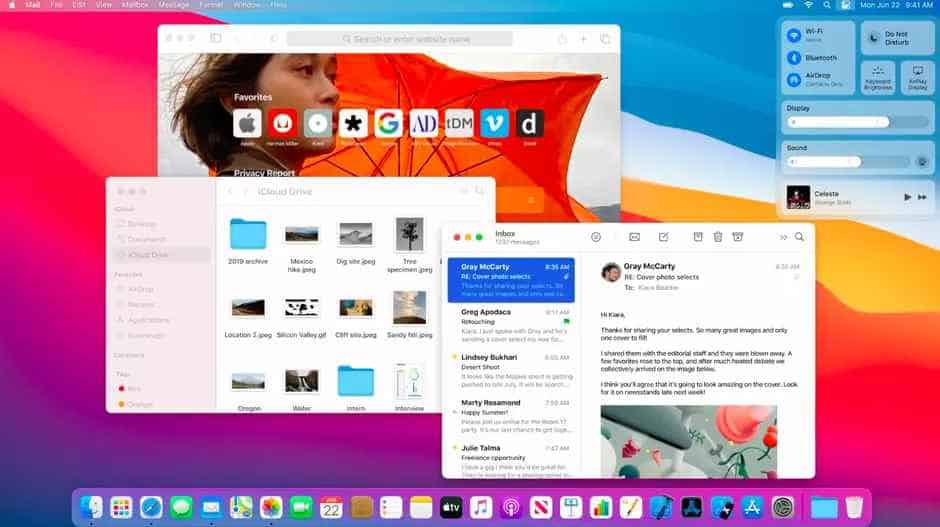
OS Highlights
- This is the most visually attractive operating system with a colorful UI.
- macOS security system is superb with great developer support.
- It supports bash shell by default, and the terminal is similar to Linux distros.
- macOS has support for powerful graphics and video editing suites.
- You will get optimized performance since it runs on Apple systems only.
Pros: There is no alternative for macOS if you want to develop iOS and other Apple products.
Cons: This is a proprietary OS, and you will have to buy expensive hardware to run this operating system.
2. Solaris
Sun Microsystems was the developer of this powerful Unix-based operating system. It was known as SunOS back then. However, after the acquisition of Oracle, it became a part of their portfolio. In 1992 the developers pushed the initial release, and after 2015, it didn’t get any further updates.
It’s because the parent company Oracle is not yet interested in Solaris at this point. But yet, Solaris was a significant OS in those days of computing when Linux was not that popular.

OS Highlights
- The OS is quite stable and mature with two decades of active development period.
- This OS enables you to run legendary legacy programs on any modern hardware.
- Unified Archives feature lets the users quickly back up data to move the whole system.
- It is specially optimized for enterprises and large-scale applications.
- The ZFS file system is quite reliable, with a faster read-and-write speed.
Pros: Oracle has a good enterprise support facility which is appreciable and a great benefit as well.
Cons: The OS is not pushing any feature updates lately, which is a downside.
3. Darwin
Apple is mostly known for its proprietary stuff. But you will be surprised to know that they have developed some open-source projects. Darwin is one of them. This is an operating system based on Unix, which created the foundation of the modern macOS. Darwin includes a customized BSD, and you will find many features and flexibilities of the original BSD OS inside it. It was released in 2000, and the latest version is from the year 2017.

OS Highlights
- Darwin has an advanced file system with all the modern features.
- The core components of OSX and the brand new macOS are built upon it.
- It has a full-fledged networking module that supports common protocols.
- You can use any scripting language on it, such as Ruby, Python, Perl, etc.
- Software development is much easier with binary file architecture support.
Pros: This is a great open-source endeavor of Apple with freedom and flexibility in mind, helping the developers.
Cons: The OS is not available for the end-users right now, and hence you can’t use it.
4. IBM AIX
IBM is considered a pioneer of computing. They have developed various technologies in terms of modern computing. IBM AIX is their operating system which is developed on top of the Unix System V. So, and you can call it the classic Unix-like OS without any doubt.
Although it was first developed for IBM hardware, later on, it gained support for various other platforms. Since it is specially optimized for enterprise deployment, you will find advanced flexibility and scalability in it.
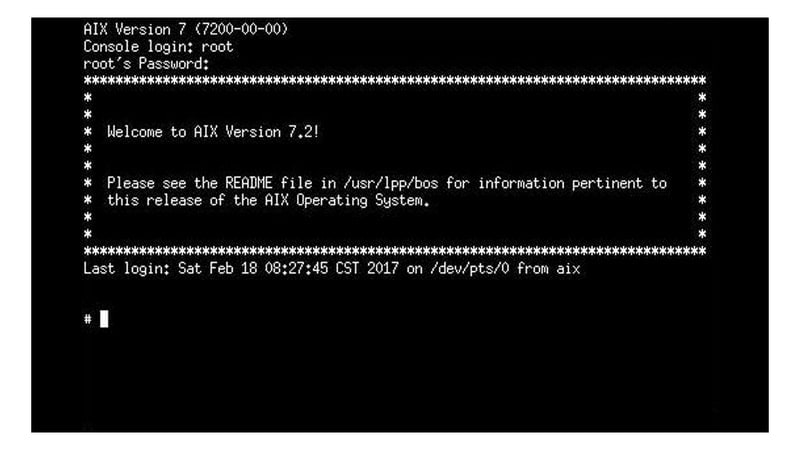
OS Highlights
- Security is the top-most priority of IBM AIX with a Trusted Execution feature.
- AIX servers have much lower downtime than any other server OS available in the market.
- A long 30 years of development history made is stable and solid like a rock.
- IBM has special hardware named Power Systems that work best with AIX operating system.
- They provide regular updates with compatibility with modern applications.
Pros: Official support and regular updates from IBM is a core strength of this operating system.
Cons: This is not suitable for personal computers, which is obvious for this old OS.
5. HP-UX
HP-UX is yet another operating system from the Unix family. It is still functional, and this is an important element of HP’s enterprise portfolio. In fact, this is one of the oldest players in the Unix-based operating system game. HP-UX is operated under the Hewlett-Packard Enterprise banner and doing really well. It is used as data storage, computing, and networking servers in different parts of the world.
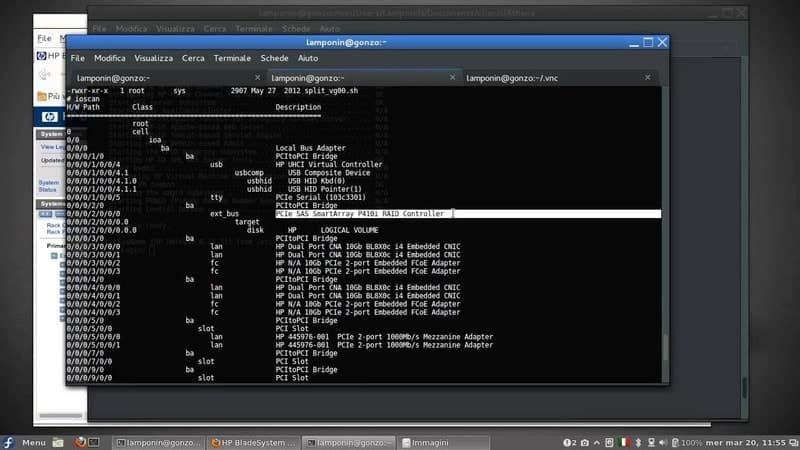
OS Highlights
- HP features four different services regarding deploying HP-UX in your company.
- It supports virtualization technology that helps you in many ways to minimize hardware costs.
- This OS is integrated with HPE’s special security measures to keep your data safe.
- It has zero downtime and uninterrupted services on the servers, which is a big advantage.
- The development environment is feature-rich and powerful, which can be used for building critical apps.
Pros: If you want the highest reliability, scalability, and security, then this is a great choice for your enterprise.
Cons: The cost of deploying and managing it on your own server is pretty high.
6. FreeBSD
As the name suggests, FreeBSD is a free and open-source operating system. The developers built it upon the code-base of Unix. It is a multi-purpose operating system with support for various hardware platforms, including embedded systems. This operating system is still under development and provides regular updates and patches. Being under a continuous development cycle for more than 30 years, you can rely on this for stability and security.
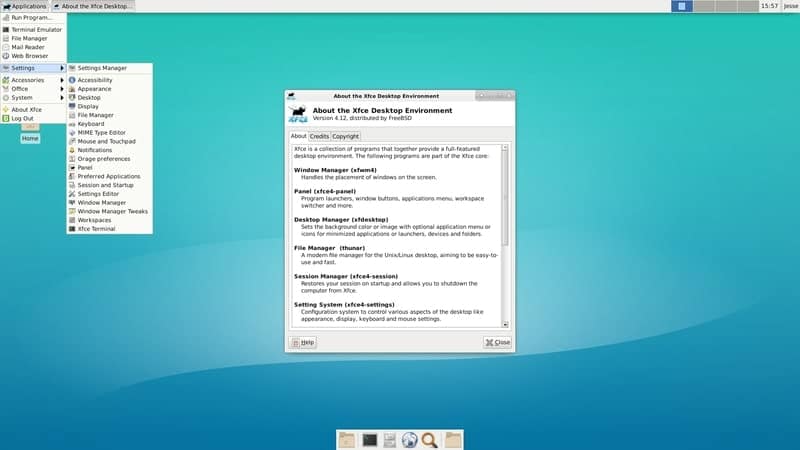
OS Highlights
- It uses a new and improved binary packaging system named pkg.
- Unmapped I/O is a great feature that reduces CPU usage on large servers.
- FreeBSD has several firewalls built-in so that you can use this on servers without additional configuration.
- Unmodified Linux binaries run on this system smoothly, and it also works as a great Linux emulator.
- It includes a feature named Jails that enables virtualization with some advanced features.
Pros: FreeBSD is mostly pre-configured, and you can start using this straight out of the box without advanced modifications.
Cons: If you compare it with Linux, then some Linux distros offer better flexibility and performance.
7. NetBSD
NetBSD is one of the very few open-source Unix-based operating systems out there. It is a fork of the original Berkeley Software Distribution or BSD. Unlike many other OS of the Unix family, the community provides regular features and security updates. Portability is the biggest strength of this operating system. Whether you want to deploy it on a large enterprise server or an IoT device, NetBSD got you covered.
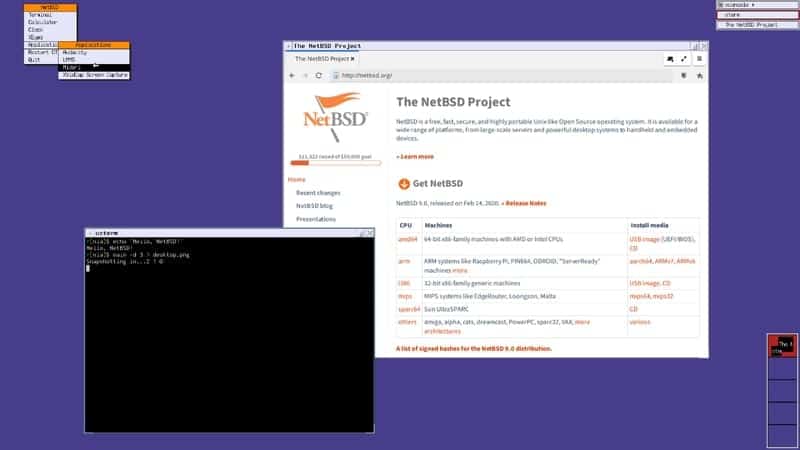
OS Highlights
- NetBSD has a minimal and traditional design language that is reliable and helpful for new users.
- It uses the pkgsrc package manager and the pkgin binary that is very flexible, and the update system is superb.
- This operating system is highly optimized to run on ARM systems that are a great advantage for IoT applications.
- Hardware acceleration and support for virtualization paved the way for more advanced use-cases.
- Being a community-backed OS, NetBSD is well documented, and there is a lot of options to get direct support.
Pros: The developers always keep the core up-to-date, which is a big advantage.
Cons: Non-commercial OS lacks enterprise support and is not suitable for deploying on organizations and enterprises.
8. SCO OpenServer
SCO OpenServer is the successor of Microsoft’s Xenix operating system. You will be surprised to know that Microsoft once bought the license of Unix from AT&T to develops their own Unix-flavored OS named Xenix. However, later on, Microsoft shifted its focus from Zenix and sold it to SCO.
The original version of OpenServer was based on Unix System V, and this OS was quite popular those days. However, the current version of SCO is based on FreeBSD, which is also a Unix-like system.
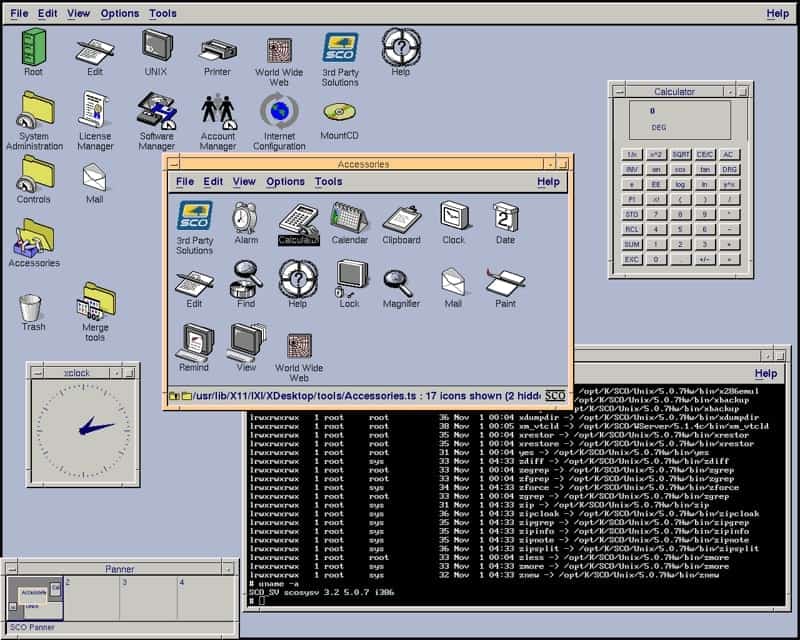
OS Highlights
- SCO OpenServer is specially designed to manage small and medium-sized businesses with minimal configuration.
- Although it is a closed-source OS, it has great support for open-source applications and traditional Intel chipset.
- You can manage and upgrade the server hardware anytime with zero-downtime, which is vital for large organizations.
- System stability is one of the most important reasons people go for OpenServer.
- The developer company provides special business support to deploy and manage this on your own server.
Pros: The overall installation and maintenance cost is less than most other commercial server solutions.
Cons: Some modern alternatives perform better on the latest hardware.
9. SGI IRIX
Silicon Graphics, aka SGI, developed this OS almost 33 years ago. In 2013 the developer group retired from further development, and currently, this OS is discontinued. Actually, HP bought the license and merged it with their HP-UX system. Anyway, SGI IRIX was originally intended for the workstation and servers.
This is why it was quite popular at that time and competed well against other Unix-like operating systems. Although the final version was released back in 2006, the developers provided support until 2013.
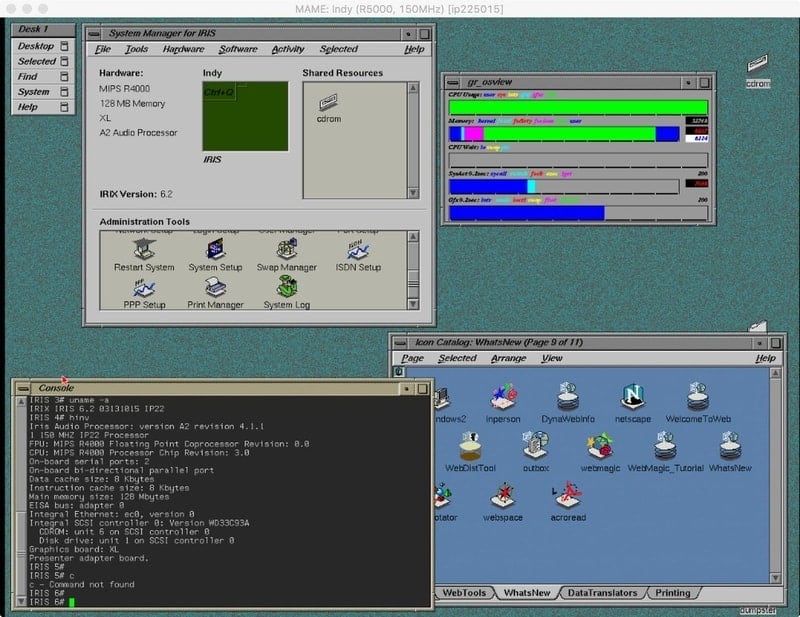
OS Highlights
- Based on the Unix System V, this OS is compatible with legacy hardware and software.
- It was one of the very first systems that had an XFS file system and OpenGL graphics framework.
- This powerful system was capable of running multi-threaded graphics and scientific analysis programs.
- It includes the MIPSPro compiler, which supports various legacy programming languages, including C.
- There is a large hobbyist community that still uses this OS for various reasons.
Pros: Support for various graphics and animation tools was the biggest attraction of this operating system at that time.
Cons: You won’t get any further feature updates and support from the developer company.
10. Tru64 Unix
This is yet another depreciated Unix-based operating system. It was originally developed by DEC and was known as Digital Unix. Later on, Compaq got the ownership, and finally, HP bought it and merged it with their own Unix system under the HP Enterprise portfolio. From the initial release in 1993, this OS was getting updates until 2010. Although the developers have discontinued it now, it is a great example of a Unix system with a command-line interface.
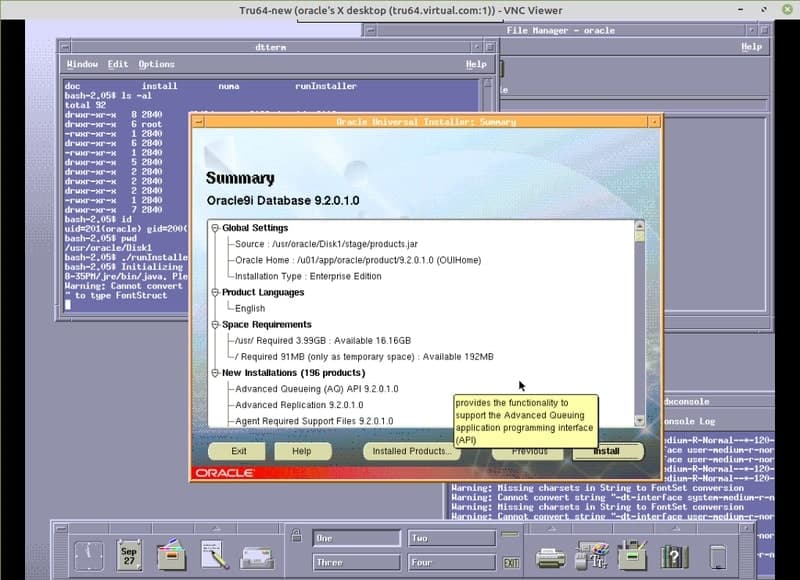
OS Highlights
- It supports almost all enterprise software, including some popular open-source consumer applications.
- You can control this OS either from the command-line interface or from the web-based control panel.
- It supports cluster computing that is beneficial for large-scale deployments.
- This operating system uses the Mac Kernel developed by Carnegie-Mellon University.
- Virtual memory, shared libraries, and the unified buffer makes it a full-fledged headless computing platform.
Pros: Before the discontinuation of the development, software support was one of the key selling points of this OS.
Cons: It lacks a graphical UI which is indeed a negative side for most users.
Our Recommendations
As you can see that most of the Unix-like operating systems are for enterprise usage. Some of them are discontinued, and it’s better not to use them on sensitive organizations because of security concerns.
But if you still want to adopt a Unix-based operating system on your own enterprise server, I will highly suggest you go for HP-UX. Although this is a paid solution, you will get better customer support and regular security updates which is the main thing. But if you want something for casual usage, then FreeBSD or NetBSD is a great choice.
Final Thoughts
Mass people nowadays don’t use Unix-like systems other than macOS and some popular Linux distros. But once there was a time when Unix was a pioneer, it paved the way for many modern operating systems that we see nowadays. Maybe the original Unix and the derivatives will be history someday, but tech-savvy people will never forget this legendary platform. Anyway, if you found this article helpful, then please share it with your Unix-lover friends. I hope they will love it, and it will help them to become nostalgic for a moment.
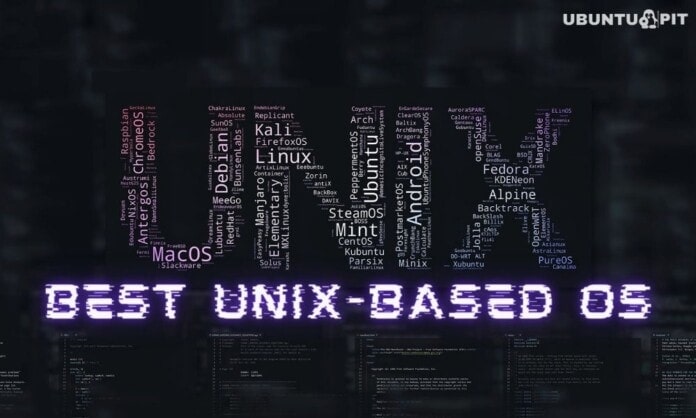
Why no mention of OpenBSD or DragonflyBSD?
They are free to use and current, unlike some of the ancient and unobtainable systems mentioned in this article.
This must be an older article. There are a LOT of non-linux operating system out there – up to date and ready to try. ReactOS and Haiku are two of MY favourite. Just pop over to DistroWatch and go exploring.
UNIX, nowadays, is just a certification by the Open Group. Any “UNIX-like” operating system can get a certification. There are some Linux-based distributions that are UNIX certified. More, the article has some mistakes. It’s not true, for example, that Solaris has had no updates since 2015. AIX, HP-UX, Tru64 UNIX, macOS, SCO OpenServer, IRIX and Solaris are all UNIX certified. Darwin is based on FreeBSD, not a customized BSD. FreeBSD is not based upon the UNIX source code. In fact, all modern open source BSDs have been rewritten from scratch to remove any BSD and Unix code. Finally, I have to point out a blaring misconception of what UNIX is: The author says about Tru64 Unix “it is a great example of a Unix system with a command-line interface”. EVERY UNIX and UNIX-like system has a command-line interface. This statement can lead to incorrect information about every UNIX and UNIX-like system in existence.
Thanks for your insights.